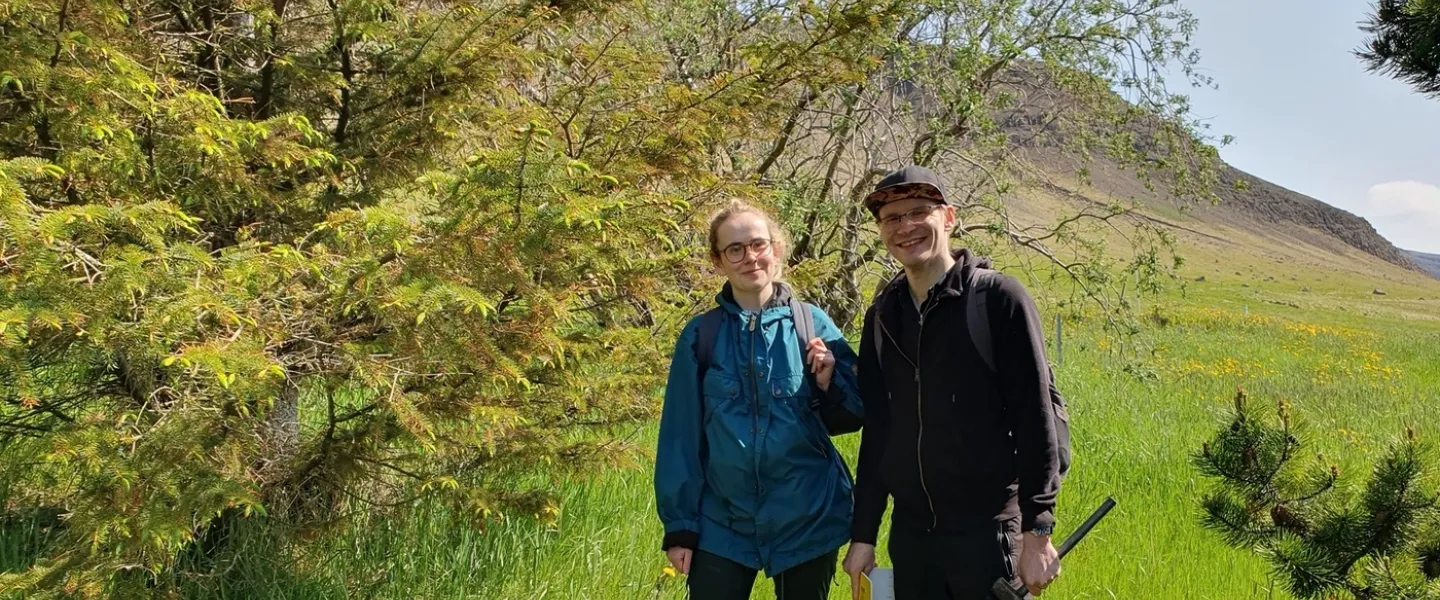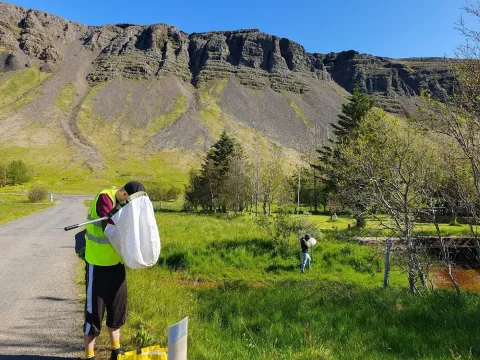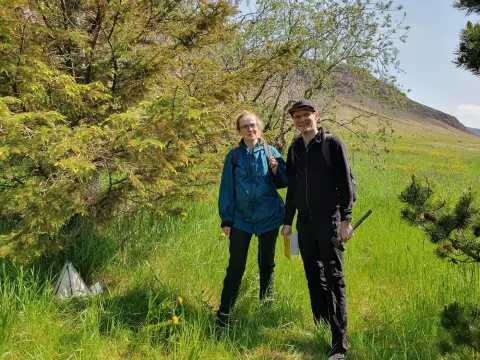
Most people in Iceland have probably noticed increasing numbers of biting in the country over the last few years. These tiny and hard-to-spot flies midges (called no-see-ums in English and lúsmý in Icelandic) settle on mammals to drink their blood, something which many of us have no doubt experienced first hand. "We believe that biting midges first arrived in Iceland around 10 years ago, but there is still a lot we don't know about their biology," says Arnar Pálsson, professor at the University of Iceland Faculty of Life and Environmental Sciences. Along with his colleagues, he has spent the summer researching the distribution and DNA of these aggressive newcomers, as well as the fruit flies you may have seen around the fruit bowl at home. The aim is to map the distribution of these species in the capital area and changes in their numbers over the summer.
Three biology students at the University of Iceland – Guðfinna Dís Sveinsdóttir, Nína Guðrún Baldursdóttir and Rafn Sigurðsson – are involved in the project, which is partially funded by a grant from the Student Innovation Fund. The Student Innovation Fund allows universities, research institutes and companies to hire undergraduate and graduate students for summer jobs on ambitious and demanding research projects. Andreas Gaehwiller Guðmundsson has also assisted on the project.





